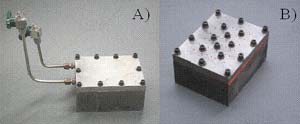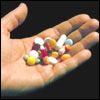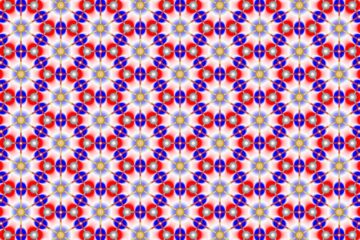Latest News

Towards an AIDS vaccine: unusual antibody that targets HIV described by scientists at TSRI
A group of scientists from The Scripps Research Institute (TSRI) and several other institutions has solved the structure of an antibody that effectively neutralizes human immunodeficiency virus (HIV), the virus that causes acquired immunodeficiency syndrome (AIDS).
The antibody binds to sugars on the surface of HIV and effectively neutralizes the virus because of its unique structure, which is described in the latest issue of the journal Science.
“What we found was an unusual conf

New catalyst paves way for cheap, renewable hydrogen
Scientists have developed a hydrogen-making catalyst that uses cheaper materials and yields fewer contaminants than do current processes, while extracting the element from common renewable plant sources. Further, the new catalyst lies at the heart of a chemical process the authors say is a significant advance in producing alternate fuels from domestic sources.
In the June 27 issue of the journal Science, James Dumesic, John Shabaker and George Huber, of the University of Wisconsin at Madis

Charting seismic effects on water levels can refine earthquake understanding
Through many decades, stories about earthquakes raising or lowering water levels in wells, lakes and streams have become the stuff of folklore.
Just last November, the magnitude 7.9 Denali earthquake in Alaska was credited with sloshing water in Seattle’s Lake Union and Lake Pontchartrain in New Orleans, and was blamed the next day when muddy tap water turned up in Pennsylvania, where some water tables dropped as much as 6 inches.
But the relationship between seismic activity and

New guidance for purchasers of HIV/AIDS medicines
An updated edition of Sources and Prices of Selected Medicines and Diagnostics for People living with HIV/AIDS will be released today. The report provides market information on 74 reviewed products for the treatment and management of HIV/AIDS from 61 manufacturers.
The report gives purchasers of AIDS medicines and diagnostics a range of choices related to suppliers and affordability. The medicines included were selected on the basis of WHO standard treatment guidelines. The list is n

The flight of ICAROS
EU satellite research project tackles urban air quality from space
A three-year project led by the Commission with ten partners from Greece, Germany, Hungary and Italy has developed an innovative system for monitoring and managing urban air quality and the related health risks. Results of the “ICAROS NET” technique were presented today in Budapest. ICAROS uses satellite-borne sensors to monitor the concentration of harmful particles in the air, caused by heavy industry, traffic and ho

From securing stealth to ensuring health
A material used to protect submarines from sonar detection is the latest technological breakthrough in ensuring the safe and effective dose of ultrasound in medicine. Practitioners and thousands of patients in physiotherapy departments worldwide will benefit from the latest technology, which will ensure a step forward in the reliability of delivered ultrasound treatment.
The material forms a key component in a novel desk-top ultrasound power meter developed by the UK’s national standards lab











